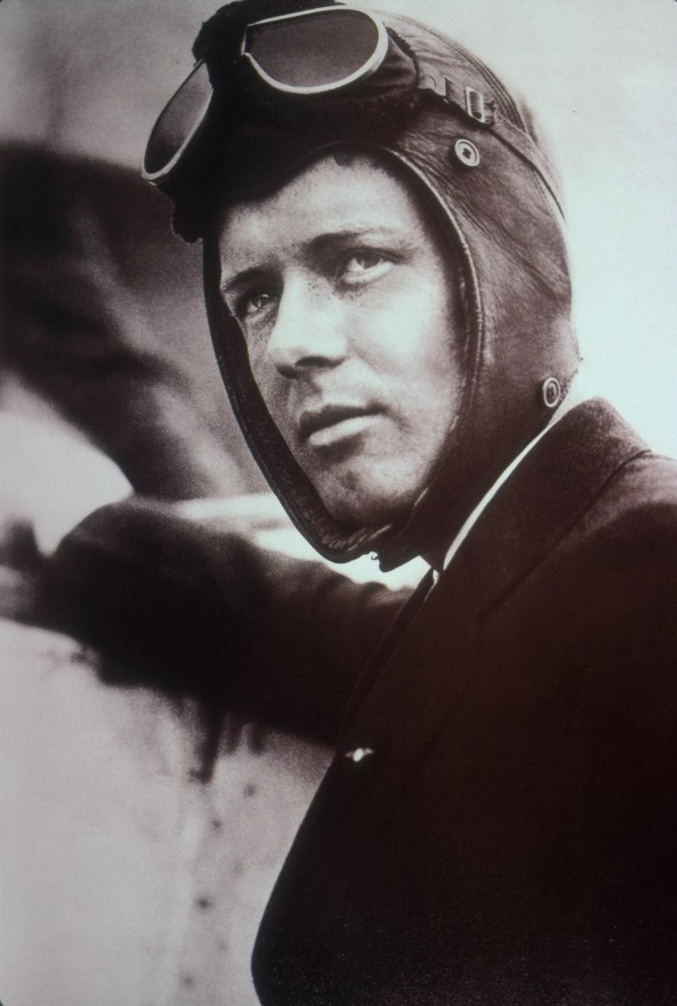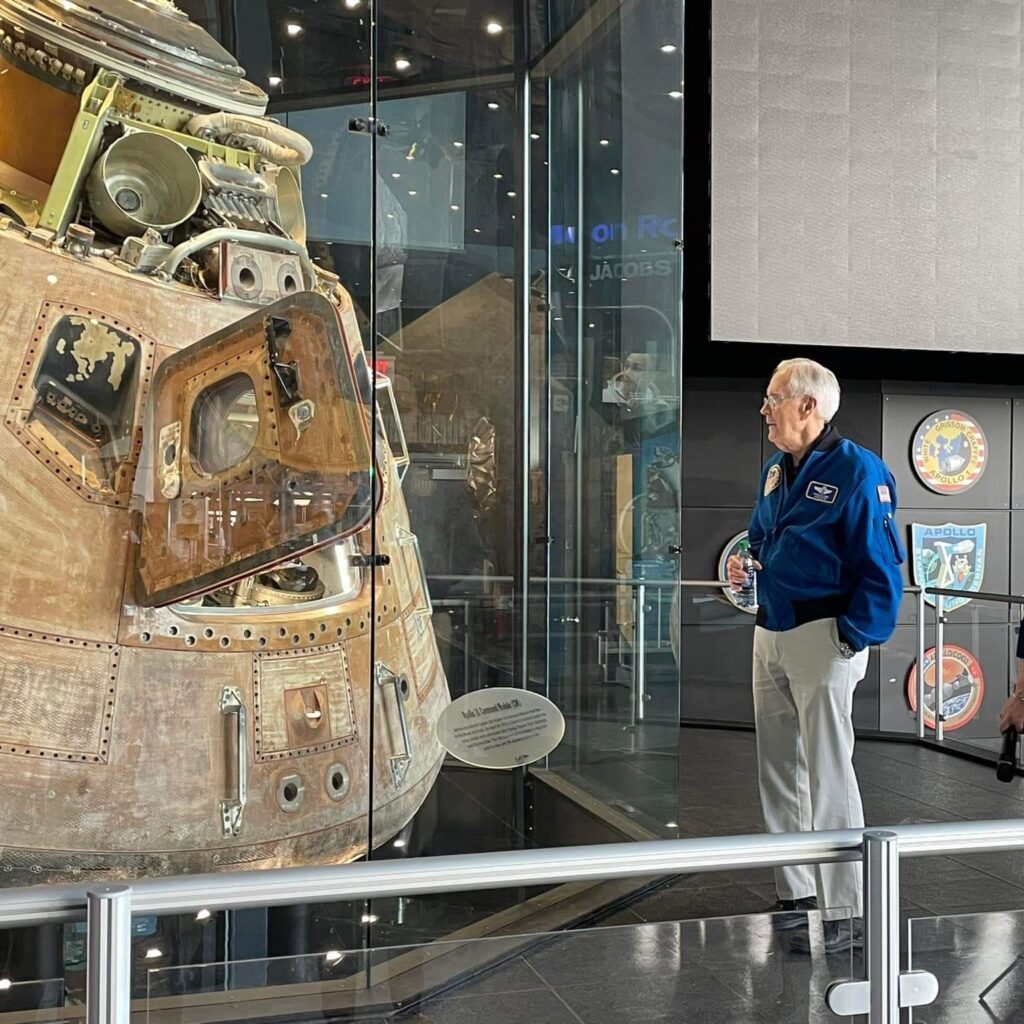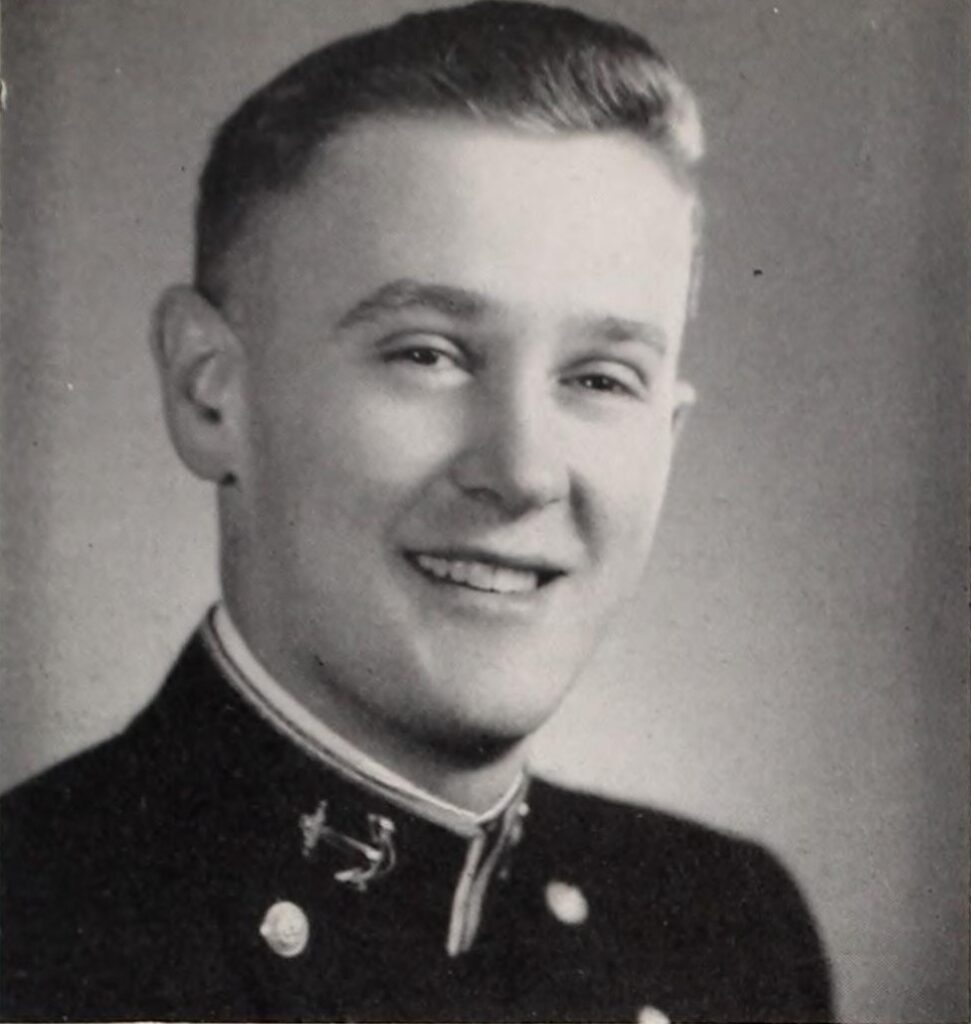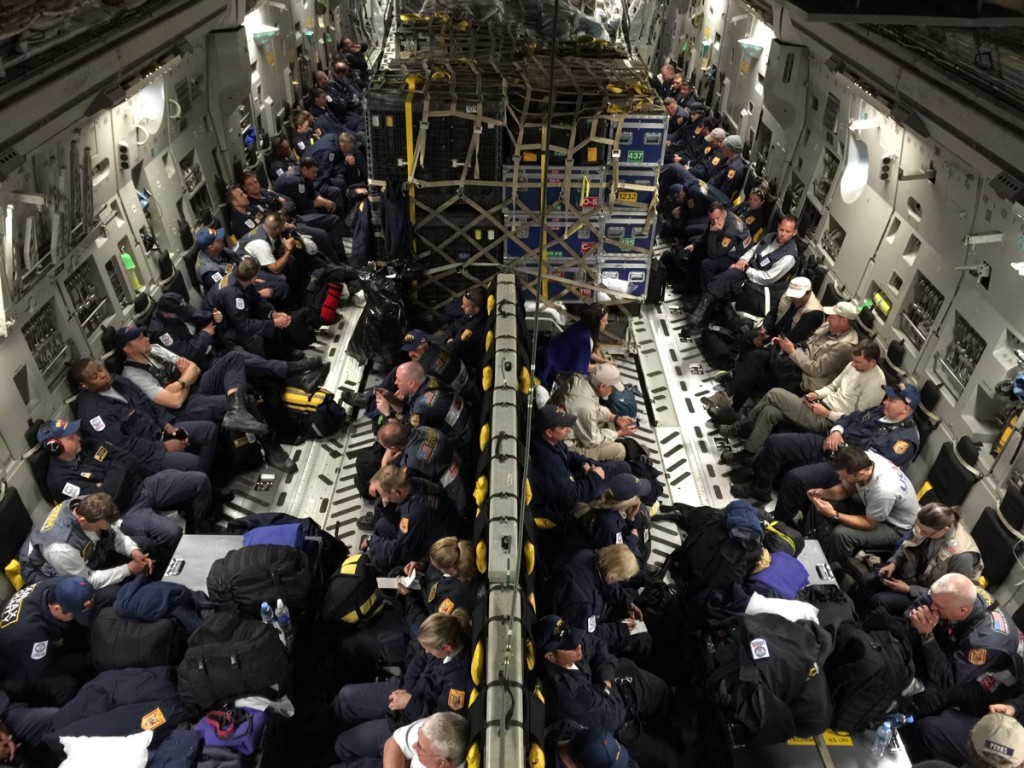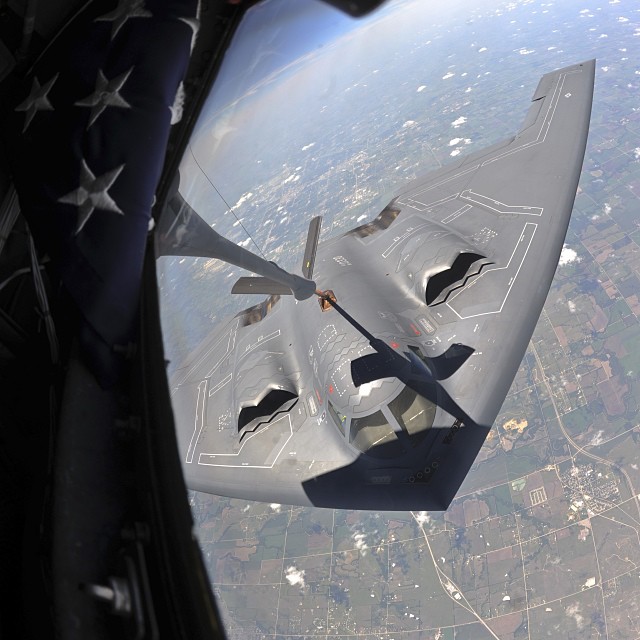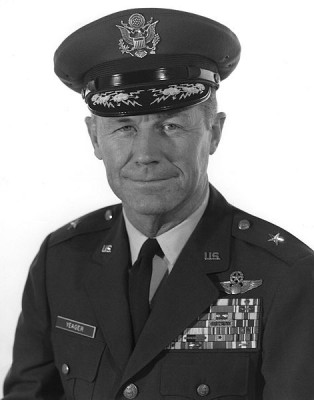My attention has been gripped by the mysterious disappearance of Malaysian Airlines Flight MH370. To begin with, it is exceedingly rare for a modern jetliner to just vanish over the ocean without making a distress call. (But it did happen in 2009: Air France Flight AF447).
And yet, MH370 is even stranger. Just like with AF447, there was no distress signal. Flight controllers only suspected a problem after the plane failed to respond at an expected time. In the case of AF447, investigators pulled the plane’s automated ACARS transmission data and realized the plane had been in big trouble. By contrast, the last available ACARS data from MH370 report nothing unusual at all. Then, they terminate.
Of course, once air traffic control recognized the plane as missing, the initial search activity was conducted along the scheduled route. A failure to find anything could have meant the flight never went that way, or that widely dispersed wreckage and fuel oil slick on the water had simply been overlooked.
But within days, news surfaced about the plane’s radar transponders and automated communications gear not functioning. Apparently, these systems went down minutes before the last voice transmission was made. This is very odd indeed, because if these systems malfunction, both pilots would see warnings on their screens, and yet, the last voice transmission indicates nothing unusual.
This was followed by revelations that INMARSAT data indicate the plane was still airborne at least 7 hours after takeoff, but not along its planned route. Meanwhile, uncorroborated reports suggested the plane had been spotted by military radars in airspace not listed in the flight plan. And, there have been claims that the plane first rose unexpectedly to 45,000 feet (which is almost impossible with a heavy fuel load and certainly dangerous, since it could make the plane unstable and stall). Then, the plane is said to have descended to as low as 5,000 feet, which (if done deliberately) would have seriously compromised its range.
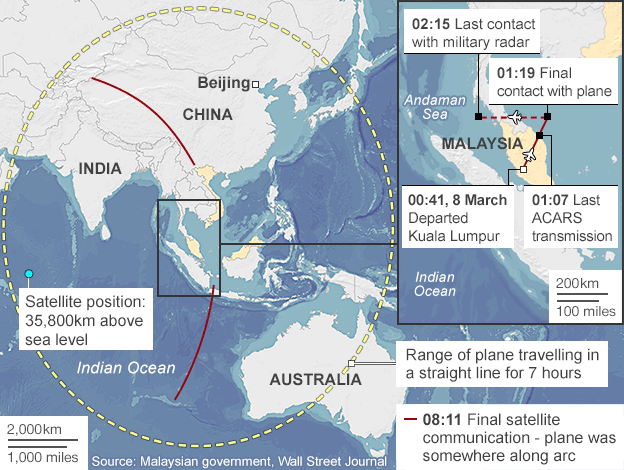
Did someone turn off ACARS, the radar transponders and radio-based navigation systems to deliberately produce “radio silence” – the way it has often been done in military flying? (Then why wasn’t the satellite link severed as well?)
Much has been made of the fact that civilian and even military radar coverage in the region is not what one might expect. There are gaps, and a knowledgable pilot could have navigated without detection. I assume the pilot could have used of a handheld GPS device after turning off the plane’s built-in ADS-B. But to avoid radar, the pilot might have to descend at the expense of range and speed.
Given its fuel load, a quick look at the map shows that the Beijing-bound Boeing 777 could have reached as far as India, Pakistan and perhaps even North Korea – at least at optimal cruising altitude. But certainly not at prolonged flying at low, ground radar evading altitudes.
Adding to the mystery are the two people at the controls: Captain Zaharie Ahmad Shah (53) and First Officer Fariq Abdul Hamid (27). Both have been exposed on Australian TV for unprofessional conduct in the cockpit. And Mr. Shah was apparently a critic of Malaysia’s regime and supporter of the controversial opposition leader, Anwar Ibrahim. Both pilots were Muslims, although no information has been made public indicating any link to Islamic extremism.
Many theories have been put forth. But in my opinion, each of them has serious flaws.
Conservative engineering and redundancies mean that modern jetliners very rarely crash as a result of one single cause. In almost every disaster, there are many contributing factors and a series of interconnected failures. It is strange that so far, not a single indication for any sort of such problem has been found.
One interesting theory I have read would have something on the plane catch fire shortly after the last voice transmission at 1h19 local time. At that exact time, Hamid transmitted a standard “good night”, suggesting everything was peachy.
Here’s the theory: Shortly thereafter, smoke fills the cockpit. The pilots may struggle with smoke hoods while trying to figure out what the heck is going on. Perhaps they make a last ditch effort to climb in order to starve the fire of oxygen, but stall out at 45,000 feet. One of them takes the plane into a recovery dive, while the other reprograms the autopilot for the best possible runway he can come up with.
Shortly thereafter, both pilots lose consciousness before being able to issue a distress call. The autopilot guides the plane out over the Indian Ocean. At this point it is essentially a zombie plane flying itself. Eventually, electrical failures disable the control surfaces. The aircraft becomes unstable and goes down. (See: “A Startlingly Simple Theory About the Missing Malaysia Airlines Jet”, by Chris Goodfellow).
Sounds compelling, but this does not sufficiently explain why ACARS went offline at 1h07 (if that is indeed the case), without either of the pilots noticing a warning — fully 12 minutes before Hamid’s final “good night”. [Update 2014-04-11: The Malaysian civil aviation authority later confirmed to Reuters: “We would like to confirm that the last conversation in the transcript between the air traffic controller and the cockpit is at 0119 (Malaysian Time) and is “Good night Malaysian three seven zero.”]
The other possibility is of course foul play in one form or another.
As you might imagine, the Internet has lit up with all kinds of conspiracy theories, but there is just too much speculation to give credence to any of them.
On the other hand, the two most obvious terrorism scenarios are also problematic.
If a suicidal terrorist-pilot wants to crash a plane and murder all passengers, he can do so. (This has happened in the past. For instance: Egypt Air Flight MS990/MSR990). If he is a sole proprietor, he’d first need to knock out the other pilot. A determined individual can accomplish this by a variety of means. But then, there’s no need to fiddle with communications gear, unless the purpose is to make the plane (or the wreck) disappear.
This leaves the possibility of a meticulously prepared and cleverly orchestrated hijacking – a cunning, dramatic plan never seen before, taking the world by surprise. Far fetched? Well, so was 9-11.
And why has nobody claimed responsibility? Well, nobody did after 9-11. For some time after, the origins were (and to some degree are) still a mystery the world is hungry to hear about.
Terrorism is mainly psychological warfare.
The aim of the 9-11 attack was not simply destruction, but to generate maximum psychological impact. This can only be enhanced by a strong global media response. The painstakingly difficult investigation after the 9-11 attack, the missing pieces of information, the mysteries and loose ends all inevitably led to wild public speculation and theories. This was, of course, what the terrorists had hoped for.
It is a miscalculation to assume that terrorists would always be quick to claim credit. In the case of something truly dramatic, not fessing up and letting the world engage in wild speculation serves to maximize global attention.
If MH370 had quickly been found to be a suicide pilot, sabotage or a bombing causing the certain doom of all passengers, it would quickly fade from global consciousness, just like Egypt Air Flight MS990/MSR990.
A mystery, on the other hand, can live on forever. And aviation mysteries seem to be especially predestined to capture global attention for a long time. Let’s assume the wreckage of Flight MH370 is not found in our lifetime. Then, future generations would carry on the search the way we now still wonder about Amelia Earhart, even though her last flight was only one of many to crash on similar endeavors, and even though Earhart was not even a highly competent pilot by comparison.
A more adventurous terrorism scenario I have heard goes like this: The plane was hijacked with the intent of using the passengers as hostages. (But then, where are the passengers now?)
Or, a particularly sinister plot: The plane is hijacked, the pilot(s) throw it into radio silence, take it to 45,000 feet, depressurize the cabin, incapacitate everyone in the cabin, then take the plane to a secret landing strip. Perhaps the plane is refueled and takes off again. At a safe location far away, the aircraft is covered with camouflage netting or rolled into a hangar. In the second part of the plan, perhaps months later, the aircraft is used as a guided missile. Perhaps it could even carry a nuclear warhead.
Well, I don’t know about you, but to me this sounds more like something a Hollywood screenwriter would come up with.
Personally, I think the most likely scenario is still some sort of accident. But terrorism cannot be ruled out.
How about the other scenarios? Until the wreckage is found, I think we will never be able to discount the terrorism. However, if it really was a hijacking (and not just a deliberate crash), then let me propose yet another theory. I do this because I have not seen it mentioned anywhere.
If it wasn’t an accident, here’s my theory: a botched hijacking.
What if we are looking at an attempted, but failed hijacking? Perhaps the plan was to take the aircraft, with its passengers alive, to some big airport where the passengers could be gloatingly paraded before the world press. (Such hijackings were very common in the 70s and 80s. See: List of aircraft hijackings). Only this time, something went wrong. Perhaps one pilot was the perpetrator but failed to permanently disable the other. Or perhaps crew members or passengers fought back. (This too, has happened before: United Airlines Flight 93).
So there you have it. More questions than answers!
Let me know what you think! Please post your comments below:


